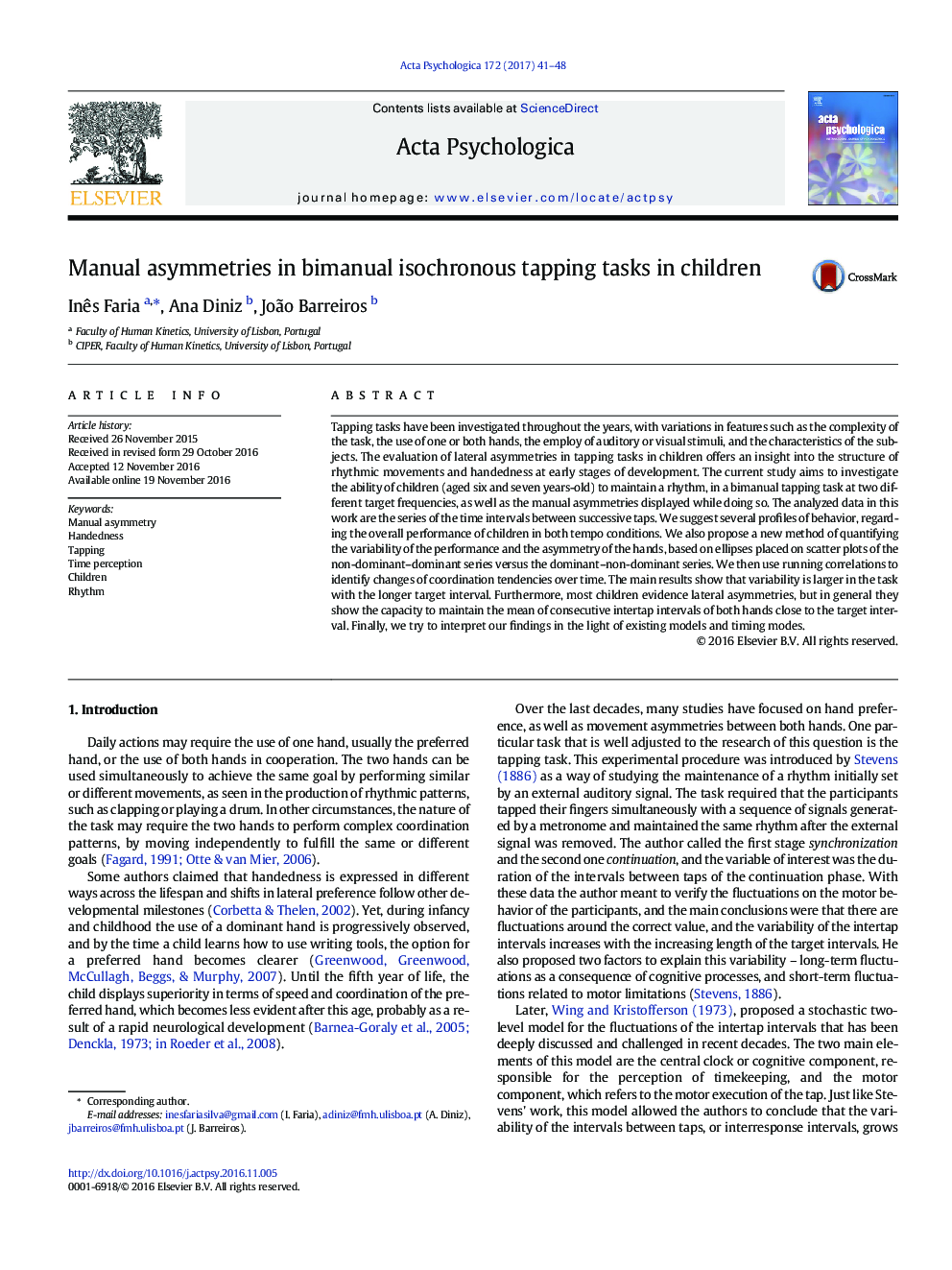| کد مقاله | کد نشریه | سال انتشار | مقاله انگلیسی | نسخه تمام متن |
|---|---|---|---|---|
| 5040252 | 1473586 | 2017 | 8 صفحه PDF | دانلود رایگان |
- Children exhibit stability, convergence, or acceleration in bimanual tapping.
- Children tend to evidence lateral asymmetries of the hands in bimanual tapping.
- One hand frequently adapts to the other to compensate for eventual deviations.
- An internal timekeeper coordinates the two sides of the body to maintain tempo.
Tapping tasks have been investigated throughout the years, with variations in features such as the complexity of the task, the use of one or both hands, the employ of auditory or visual stimuli, and the characteristics of the subjects. The evaluation of lateral asymmetries in tapping tasks in children offers an insight into the structure of rhythmic movements and handedness at early stages of development. The current study aims to investigate the ability of children (aged six and seven years-old) to maintain a rhythm, in a bimanual tapping task at two different target frequencies, as well as the manual asymmetries displayed while doing so. The analyzed data in this work are the series of the time intervals between successive taps. We suggest several profiles of behavior, regarding the overall performance of children in both tempo conditions. We also propose a new method of quantifying the variability of the performance and the asymmetry of the hands, based on ellipses placed on scatter plots of the non-dominant-dominant series versus the dominant-non-dominant series. We then use running correlations to identify changes of coordination tendencies over time. The main results show that variability is larger in the task with the longer target interval. Furthermore, most children evidence lateral asymmetries, but in general they show the capacity to maintain the mean of consecutive intertap intervals of both hands close to the target interval. Finally, we try to interpret our findings in the light of existing models and timing modes.
Journal: Acta Psychologica - Volume 172, January 2017, Pages 41-48
